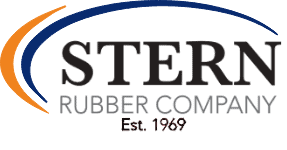How Rubber is Becoming a Part of the Green Building Revolution
Comments Off on How Rubber is Becoming a Part of the Green Building RevolutionIt may surprise you to learn that not all rubber is synthetic, as natural rubber, is a renewable product, as it is harvested from the natural rubber tree. In the U.S. alone, 300 million tires are placed in landfills each year, with 80 percent of these being recycled into a variety of materials. When rubber is recycled — say, from road tires to patio pavers — it becomes a sustainable material that’s a great pick for many building projects, much like other green building materials such as energy star-rated windows or doors. Find out the best ways to use recycled rubber in green building projects.
Rubber Flooring
Rubber is soft and spongy underfoot—precisely the reason why it’s so popular in children’s play areas and gym facilities. The material resists physical damage and water damage. Rubber is also resistant to sun fading, so it retains a uniform color throughout its lifetime. There are few materials that provide the toughness and longevity that rubber offers.
For these reasons, rubber is a becoming a popular flooring material for residential and commercial properties. Property owners enjoy rubber flooring for its ease of installation as well as its longevity and durability.
Find reclaimed or recycled rubber flooring, which is more sustainable than rubber flooring made from freshly harvested trees. Rubber comes in a range of colors, so property owners will find a hue that complements their design scheme.
Rubberized Concrete
Scientists are working on a rubberized concrete, where recycled rubber is added to the concrete mix to create a lightweight concrete alternative. Shredded rubber scraps replace the aggregate typically found in concrete. The lighter weight makes the rubberized concrete product more economical. Rubberized concrete is naturally impact resistant and absorbs energy. Since the rubberized concrete doesn’t have the same mechanical properties as concrete, it may not be suitable for all uses. Try it for driveways, walkways, or patios.
Waterproofing Membranes
Rubber is naturally waterproof. Crumb rubber from tires is now being used in waterproofing membranes, taking the place of more expensive (and less sustainable) materials. The crumb rubber adds flexibility, strength, and superior waterproofing to membranes used in decking, roofing, and flooring.
Roofs
Crumb rubber is also being added to asphalt shingles for residential and commercial roofing. Rubber extends the product’s lifespan while adding additional waterproofing. The resulting shingles are fire resistant, offer low moisture transfer, and last longer than standalone asphalt shingles.
Recycled rubber is also being turned into shake roofing tiles. Some even look remarkably like more expensive slate roofing.
The rubber tiles are rot-resistant, pest-resistant, strong (no more hail damage), and immune to mildew and moss. The lower maintenance needs of these tiles add to their value. Plus, the recycled rubber tiles insulate homes in the winter and keep them cooler in the summer, which keeps heating and cooling costs down.
Rubber roofing tiles come in the same array of colors as traditional shingles, so home and business owners can switch to a sustainable product without affecting the curb appeal of their home or office. Rubber roofing tiles come with a 50-year warranty, twice the lifespan of asphalt shingles.
With high sustainability, low maintenance, and a long lifespan, there are many advantages to switching to recycled or reclaimed rubber building materials for the home or business. Find a building contractor who is experienced working with green building materials to ensure the project is done properly.
